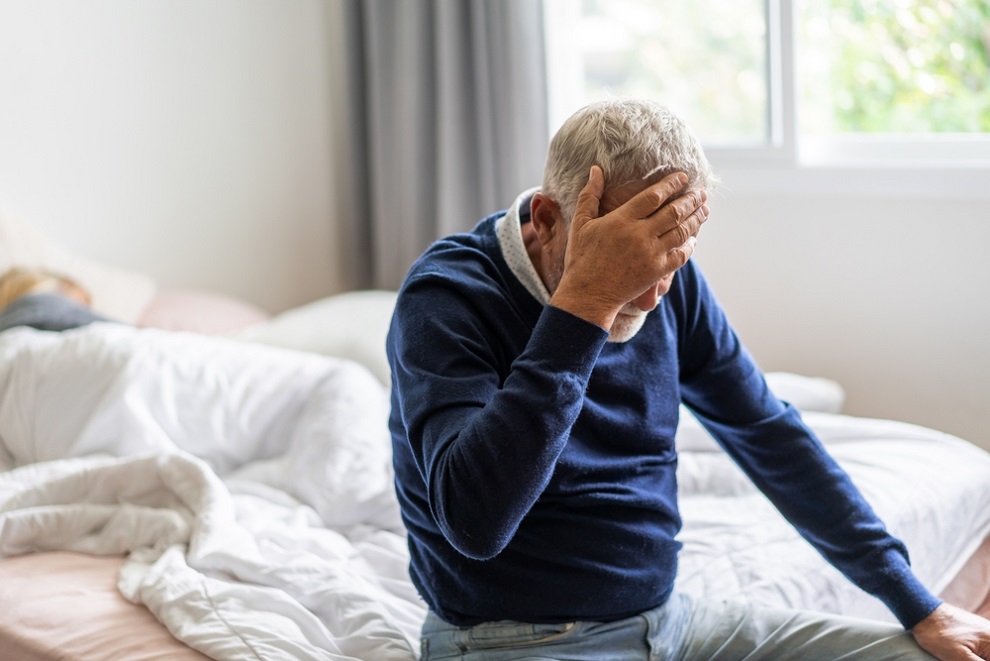Recognizing chest pain due to exercise is crucial. Whether during or after exercise, it can have multiple causes, some of which may indicate a serious condition. When you exercise, it's normal for your heart to race, your muscles to burn, and your breathing to become more labored. However, it can sometimes be difficult to distinguish between the typical exhaustion that follows a workout and the warning signs of a potential heart problem.
Key warning signs after exercise include shortness of breath, chest pain, nausea, an irregular pulse, and lightheadedness.
Continue reading to learn about these warning signs, how to respond in an emergency, and tips for exercising safely if you have pre-existing heart conditions.
What Are Signs of Heart Problems After Exercising?
If you are experiencing intense chest pain after exercising, you may worry that you're having a heart attack. Some heart attacks do begin with intense, sudden pain. Many others begin more mildly. They start with discomfort, pressure, squeezing, or fullness in the center of the chest. Heart attack pain can even come and go.
When you experience these symptoms, take your pulse. You can do this with a smartwatch or phone app, or you can do it manually by placing three fingers on your opposite hand on the wrist of the other hand. Then, count the beats per minute. People going into cardiac arrest may have a heart rate of 200 beats per minute or more.
However, if you take medications, such as beta-blockers, your heart rate may remain lower even during a heart attack.
If you are experiencing an irregular heartbeat, this may be a sign of heart trouble.
Next, try to sit down for a few minutes. This should give you time to rest post-workout. Your heart rate should reduce and the chest pain may subside.
If the pain persists for several minutes, worsens, or is accompanied by other symptoms of a heart attack, such as pain or discomfort in other parts of the upper body, shortness of breath, lightheadedness, nausea, or breaking out in a cold sweat, seek emergency medical care.

Why Do You Have Discomfort in the Chest After Exercise?
Chest pain after exercise isn't always serious. When you exercise, you do microscopic damage to the muscle fibers. Intense workouts can lead to discomfort and pain. Also, if you use improper form, you can get muscular strain in the chest that can lead to intense pain.
Heartburn can also cause pain in the chest post-exercising. If you are prone to heartburn or indigestion, a big meal before performing a workout routine may cause burning and discomfort in your chest. Exercise can cause acid from the stomach to flow back into the esophagus, leading to heartburn.
If you've been doing heavy weightlifting or intense cardio, you may have costochondritis or inflammation in the cartilage that connects the breast bone to the ribs. Intense, excessive, and repeated movements during exercise can lead to costochondritis. If you've cracked a rib or broken a bone in the chest, you may also experience sharp pain.
Some people are also prone to heart palpitations, which are feelings of fast beating, fluttering, or pounding heart. These heart flutterings can be caused by stress, exercise, medication, or medical conditions, but they are generally harmless.
Angina, which occurs due to reduced blood flow to the heart muscles, can also happen after exercise. It will feel like tightness and pressure in the chest and can cause your heart to beat more. Angina is a warning sign of heart disease. Rest and medication can help, but persistent angina can be a sign of a heart attack.
Most of the time, chest pain after exercise will go away with some rest after a few minutes. If you continue to feel symptoms of a heart attack, such as breathlessness alongside chest pain, seek emergency medical help immediately.
Should You Exercise if You Have Heart Disease?
Exercise can be scary, especially if you have heart disease. You may worry that getting your heart pumping does more harm than good. However, regular exercise is a great way to reduce your risk of heart disease. It can also be used as part of rehabilitation for people who already have the disease. It can lower high cholesterol, lower the risk of obesity, and encourage a healthy lifestyle.
The American Heart Association recommends 150 minutes of moderate aerobic exercise per week. You don't need to exercise intensely to see the benefits. Starting slowly and working up to moderate exercise is a great option for someone who has been previously inactive.
According to the National Heart, Lung, and Blood Institute, physical activity rarely causes heart problems such as arrhythmias, sudden cardiac arrest, heart failure, and heart attacks. Your fitness level determines your risk of heart problems.
People who live a sedentary lifestyle are at a higher risk of heart attack during vigorous activity than those who are physically fit. In general, children and young adults who have congenital heart problems have a higher risk of heart problems after exercise. Middle-aged and older adults with coronary heart disease also have a higher risk when they are exercising vigorously.
However, people with heart disease should discuss exercise with their healthcare provider before beginning a new routine. They can advise you on how much exercise, what type, and safe ways to build physical activity into your routine. You may even need medical supervision as you begin an exercise program.
Semaglutide and Heart Failure
In people who are obese, reducing your risk of heart disease is crucial, and one effective way to do this is by losing weight. However, weight loss can be challenging, especially if you are relying on willpower alone. Male Excel offers Semaglutide, a groundbreaking GLP-1 medication for weight loss and blood sugar management.
Adding to its benefits, a recent study published in the New England Journal of Medicine reported that a weekly injection of Semaglutide (marketed as Wegovy) resulted in a 20% reduction in the risk of death from major cardiovascular events in overweight or obese people who are not diabetic. These findings, part of the Select trial, were first reported by the manufacturer Novo Nordisk in August, further solidifying Semaglutide's role in cardiovascular health management.
In clinical trials, participants using Semaglutide saw a body weight reduction ranging between 5-20% in the first year of treatment. We offer this medication as tablets or injections at an amazing value with a flexible dosage and commitment-free membership. Additionally, Semaglutide, also known as Ozempic when used for type 2 diabetes, has been recommended by the National Institute for Health and Care Excellence (NICE) for weight management in the UK, underscoring its effectiveness.
The Benefits of Combining Semaglutide with Testosterone Replacement Therapy (TRT)
As the challenge of managing obesity and heart disease becomes more prevalent in the United States, many are exploring innovative ways to optimize their health outcomes. One such approach involves combining Semaglutide with Testosterone Replacement Therapy (TRT). This combination is gaining attention for its potential to enhance weight loss efforts while simultaneously addressing other critical aspects of health, such as metabolic function and cardiovascular health.
By combining TRT with Semaglutide, individuals may see faster and more sustained weight loss and experience improved overall well-being. This comprehensive strategy targets multiple facets of health, making it a powerful option for those seeking to tackle obesity and its related health risks effectively.
If you are looking for medical weight loss that delivers real results and could also significantly reduce your risk of heart-related complications, transform your life with Semaglutide.

How to Exercise if You Have Heart Disease
If you have cardiovascular disease, such as coronary artery disease or high blood pressure, you should take a few extra precautions when exercising. Remember that issues arise when you push yourself too hard and overtrain. It is more important to get up and move. In fact, some studies suggest that the length of time and not the intensity of exercise lowers the risk of heart disease.
Also, try the following to ensure you're not overdoing it while exercising.
Warm-Up and Cool-Down Routines
Proper warm-up and cool-down routines are essential to prevent injuries and reduce the risk of chest discomfort due to exercise. Warming up gradually increases your heart rate and blood flow to muscles, preparing them for higher-intensity activity. Cooling down helps to gradually lower the heart rate and stretch the muscles, aiding in recovery and preventing stiffness.
To warm up before an exercise. Begin with dynamic exercise. You'll want to do some arm or leg swings to get the blood pumping through your muscles. You could also start with a brief walk or high knees. These should be low-intensity exercises that get your muscles warm. Set aside about 10-15 minutes for warm-up.
Then, to cool down, end an exercise routine with a walk or light activity to slow your heart rate and return it to normal. This activity should last about 5-15 minutes.
Realize Your Limit and Avoid Exceeding It
Understanding your physical limitations and how far you can push yourself is critical. Doing too many workouts can hurt your body. Chronic intense exercise can put you at risk of myocardial injury (when heart muscle cells begin to die). It is important to incorporate regular rest and breaks into your workout routine.
Workout routines should also be varied. Try a combination of intense, moderate, and light exercises to give yourself a well-rounded training program.
Gradual Intensity Increase
To minimize the risk of heart pain after working out, gradually increasing the intensity of your exercise routine is crucial. This approach allows your heart and muscles to adapt to increased demands without causing undue strain or stress, helping to prevent potential cardiac issues and muscle injuries.
When you are beginning to work out, you may be enthusiastic and feel like pushing yourself to your limits, but this can have negative effects on your body and mind. Start out by building plenty of rest into your routine. Then, after a few weeks, when your body has adapted, start to decrease your rest times.
If you are weightlifting, begin with a lighter weight and slowly build up strength and resistance to include heavier weights.
For runners, adding inclines into your running track or adding more distance can up the intensity. You want to ease yourself into these transitions, and if you feel like it's too much, you can always ease back.
Listen and Respond to Symptoms
When exercising, if you experience any pain—especially chest pain, dizziness, excessive sweating, or anything similar—do not continue. Take a break. If your symptoms seem severe, seek out help. Don't ignore the signs to stop exercising.
Also, skipping the gym is best if you're unwell or running a fever. You could spread illness to others in the gym around you. A go-to method for deciding whether to work out when you are unwell is to do the “neck check.†If your symptoms are above the neck (sore throat, sneezing, runny nose), then you can probably still work out as long as you're not feverish
If you have chest congestion, muscle aches, stomach upset, or any below-the-neck symptoms, it's time to take a rest. Even if you pass the “neck check†while ill, you should cut your exercise intensity down by 50%.
It is important to allow yourself to rest. Don't push yourself too hard. Your body needs time to recover and heal.
Drink Plenty of Fluids
Hydration is important for replacing fluids lost through sweating. Dehydration can cause heart issues because less blood is traveling through your body. This can cause low blood pressure, fainting, and dizziness. Your heart may even begin to beat faster (tachycardia) to try to get more blood pumping through your body.
When exercising, it is important to drink about 4-8 ounces of fluid every 15-20 minutes during moderate activity. You can increase that to 8 ounces every 15 minutes for intense workouts. Temperature is also a contributing factor. So, if it's hot, be sure to keep the water bottle handy.
Get Enough Sleep
Poor sleep is another risk factor for cardiovascular disease. Most adults need 7-9 hours of restful sleep daily for good heart health. Chronic sleep deprivation can lead to elevated blood pressure and stress on the heart. Sleep deprivation also impairs metabolism and causes inflammation.
Certain sleep disorders, such as sleep apnea, can even decrease oxygen levels and lead to heart rhythm irregularities.
When you enter the non-rapid eye movement sleep stage, your body reduces your heart rate, drops your blood pressure, and stabilizes your breathing. This reduces stress on your heart, letting it rest and recover from the strain you put it through during the day. Frequently interrupted sleep can prevent you from getting this restorative rest, adding to the stress on your heart.
It is important to establish a bedtime routine that helps you get to sleep better and faster. Try meditation or yoga to calm you down before bed. Follow the same routine every day. Set up your sleep environment to be comfortable with the right temperature, quietness, and darkness you prefer. Avoid excessive use of electronic devices an hour or so before bed to help you sleep better.
Lifestyle Modifications to Support Heart Health
Broad lifestyle changes are recommended to lessen the risk of pain in the heart after exercise.
- Balanced Diet: A heart-healthy diet rich in fruits, vegetables, and whole grains can support cardiovascular health and lower cholesterol.
- Consistent Physical Activity: While regular exercise is beneficial for heart health, it should not exceed limits.
- Smoking Cessation: Smoking is a significant risk factor for heart disease. Quitting can dramatically reduce this risk.
- Effective Stress Management: Managing stress through meditation, yoga, or regular exercise can help reduce heart problems.
Conclusion: Signs of a Heart Problem After Exercise
Most of the time, chest pain after exercise is not serious. It can be due to muscle strain, heartburn, costochondritis, or angina. However, if you experience chest pain that comes and goes, shortness of breath, dizziness, nausea, lightheadedness, and excessive sweating, you may be having a heart attack and need to get emergency medical attention. Most adults can and should exercise to reap the heart-healthy benefits, even those with heart disease. You may need to adjust your exercise to ensure you are not training too intensely.
Remember, exercise is essential for heart health, even for those with pre-existing conditions. The key is to listen to your body, avoid overexertion, and consult your healthcare provider to tailor a safe exercise routine.
If you have health concerns, Male Excel provides expert treatment options tailored to your needs.

Find out if TRT Can Help You
TRT from Male Excel





